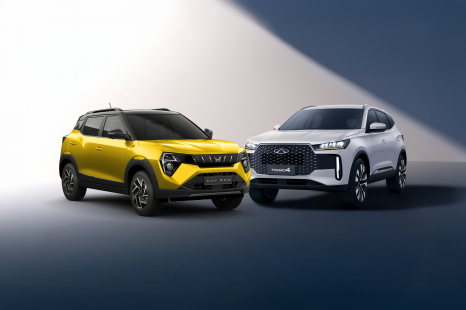

Andrew Maclean
2025 Mahindra XUV 3X0 vs Chery Tiggo 4: Spec battle
1 Month Ago
'Hey Shawty!' The Defender 90 remains a unique and capable choice in the premium 4WD market – it may even be the pick of the range!
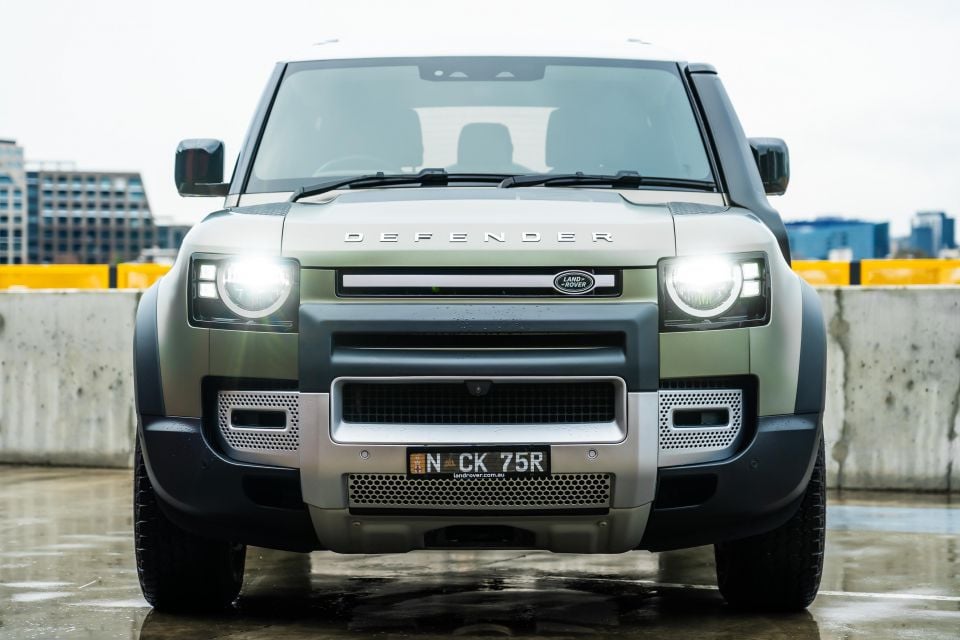
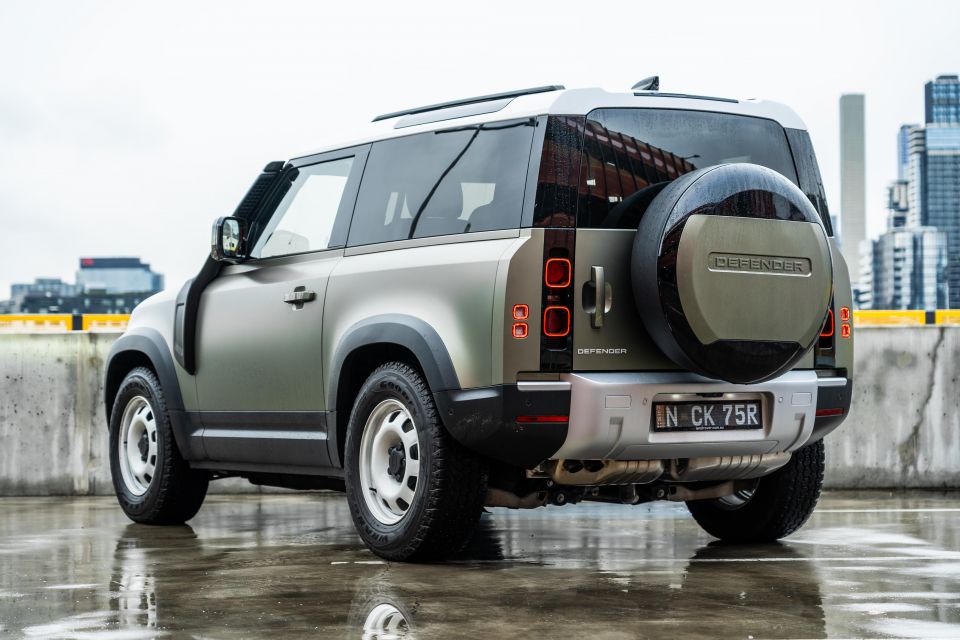

Quickly see how this car stacks up against its competition. Select any benchmark to see more details.
Where expert car reviews meet expert car buying – CarExpert gives you trusted advice, personalised service and real savings on your next new car.
The modern reincarnation of the Land Rover Defender has proven to be a smash hit globally, as well as in Australia.

While the wider Jaguar Land Rover (JLR) portfolio has been floundering Down Under of late, the Defender continues to sell in strong numbers – it currently accounts for over half of all Land Rover sales.
No doubt the five-door Defender 110 and the even longer 130 derivative get the most attention from well-heeled Aussie families, but the three-door Defender 90 tested here is something of a cult hero.
Think of it as a Suzuki Jimny for grown-ups. It’s superbly capable off-road and more city-friendly in size, but also doesn’t sacrifice on the general Defender fitout that the bigger versions are available with.
On test we have the Defender 90 S, powered by the ‘D250’ turbo-diesel inline six. The retro white steelies and Pangea Green paint over a khaki interior is perhaps my personal dream spec – minus the satin film that costs a wild $7040.
WATCH: Paul’s video review of the 2021 Land Rover Defender 90 P300
In a world where new vehicle prices continue to rise, this particular Defender has actually had a price decrease for 2025, and not an insignificant one either (over $5000).
So, while it remains one of the more niche members of the Defender lineup, does the three-door Land Rover deserve a look-in if you’re in the market for a larger luxury off-road SUV?
A new MY26 range is on the way, but the MY24 vehicle you see on test here actually received a running price reduction for the 2025 model year, and now starts from $92,402 plus on-road costs and options.
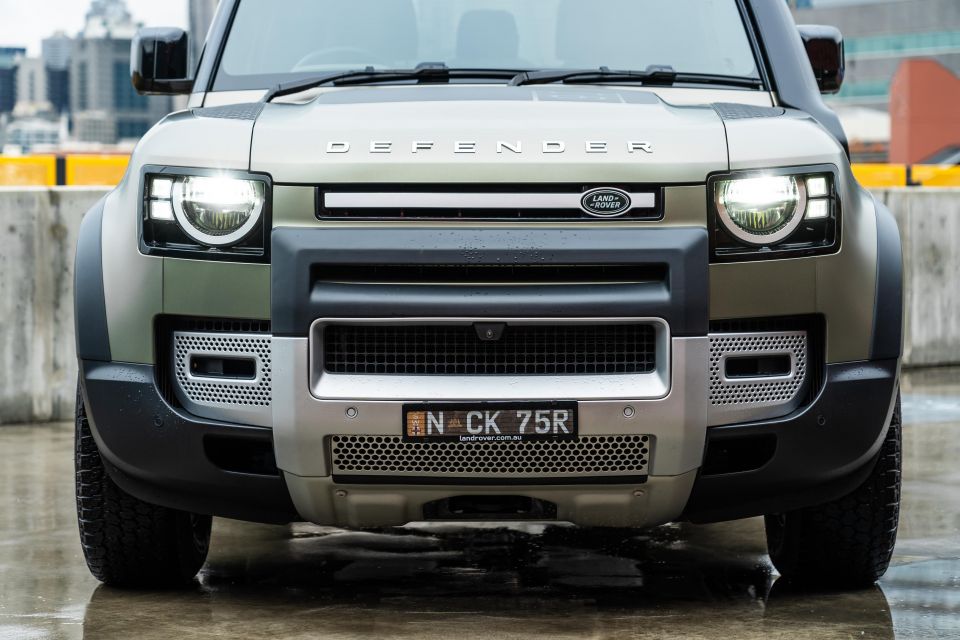
See below for the full MY25 price list, including changes from MY24. You can read more about the upcoming MY26 range here.
Defender 90
| Model | Price |
|---|---|
| Defender 90 D250 S | $92,402 (-$5298) |
| Defender 90 P400 X | $155,949 (+$7499) |
| Defender 90 P525 V8 | $192,373 (-$29,177) |
Defender 110
| Model | Price |
|---|---|
| Defender 110 P400 S | $94,992 (-$4508) |
| Defender 110 D250 Hard Top S | $106,232 (-$3768) |
| Defender 110 D350 X-Dynamic SE | $109,880 |
| Defender 110 P400 X-Dynamic SE | $115,250 (-$1400) |
| Defender 110 D350 X-Dynamic HSE | $125,125 |
| Defender 110 P400e X-Dynamic SE | $126,800 (-$800) |
| Defender 110 P400 X-Dynamic HSE | $129,900 |
| Defender 110 D350 Sedona Edition | $135,791 |
| Defender 110 P400e X-Dynamic HSE | $138,705 (-$595) |
| Defender 110 D350 X | $158,627 |
| Defender 110 P400 X | $159,945 (+$7795) |
| Defender 110 P525 V8 | $199,999 (-$26,501) |
Defender 130
| Model | Price |
|---|---|
| Defender 130 D350 X-Dynamic SE | $130,450 |
| Defender 130 P400 X-Dynamic SE | $134,556 (-$1144) |
| Defender 130 P400 Outbound | $136,647 (-$1753) |
| Defender 130 P500 V8 | $217,282 (-$20,618) |
Our MY24 test vehicle is also fitted with a number of packages, single-item options and dealer-fit accessories that bring the as-tested price to a cool $125,016 before on-road costs, according to 2024 pricing.
It’s worth noting that the incoming 2026 model year Defender has received some revisions to specifications and options. You can read more about that here.
To see how the Land Rover Defender lines up against its rivals, check out our comparison tool
The Defender hasn’t changed much since it debuted in 2019, though the British off-roader’s cabin still strikes a cool balance between utilitarian design, friendly ergonomics and seamless technology integration.
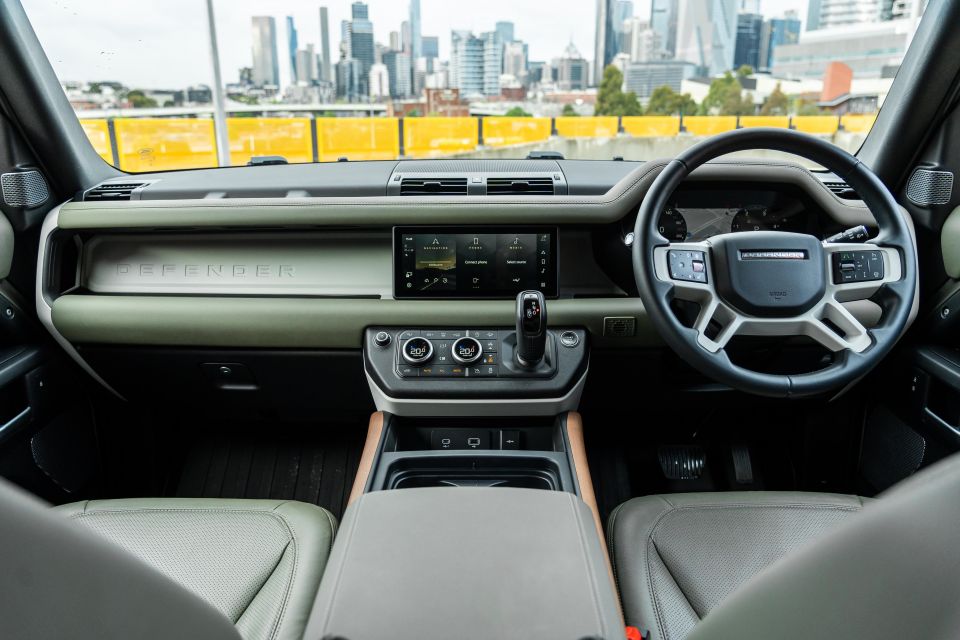
It’s worth noting some elements pictured here have been changed or will become unavailable with new model year orders, namely the open-pore wood trim finishes and the touchscreen, which has been enlarged by a couple of inches for MY26.
Regardless, the core attributes remain the same. There’s an overarching robust and utilitarian theme which harks back to Land Rover’s roots, accompanied by premium design and material quality plus the brand’s latest infotainment and display tech to keep it fresh and in line with modern expectations.
The 12.3-inch digital instrument cluster and 11.4-inch Pivi Pro multimedia touchscreen have been well regarded since launch, thanks to the nice graphics and intuitive functionality.
Land Rover’s software interface has a pretty flat structure and clear labelling to make navigating through menus and applications easy, bolstered by crisp resolution and largely snappy responses.
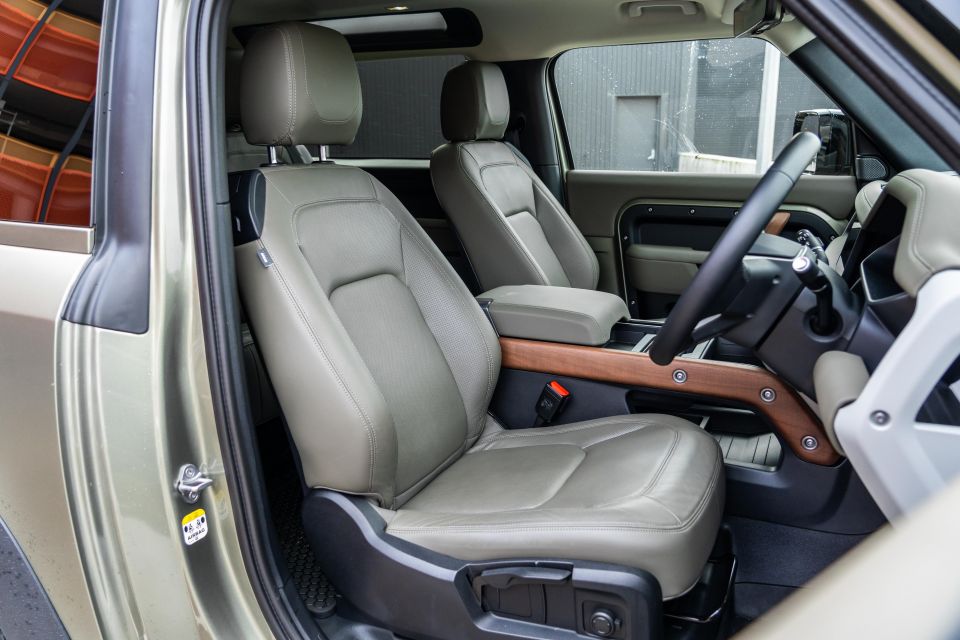
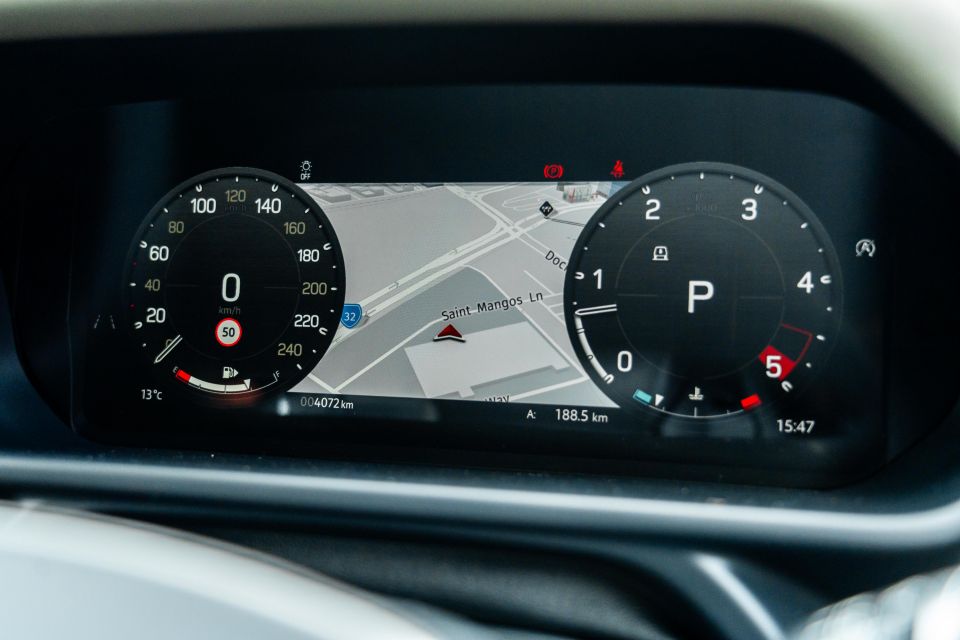

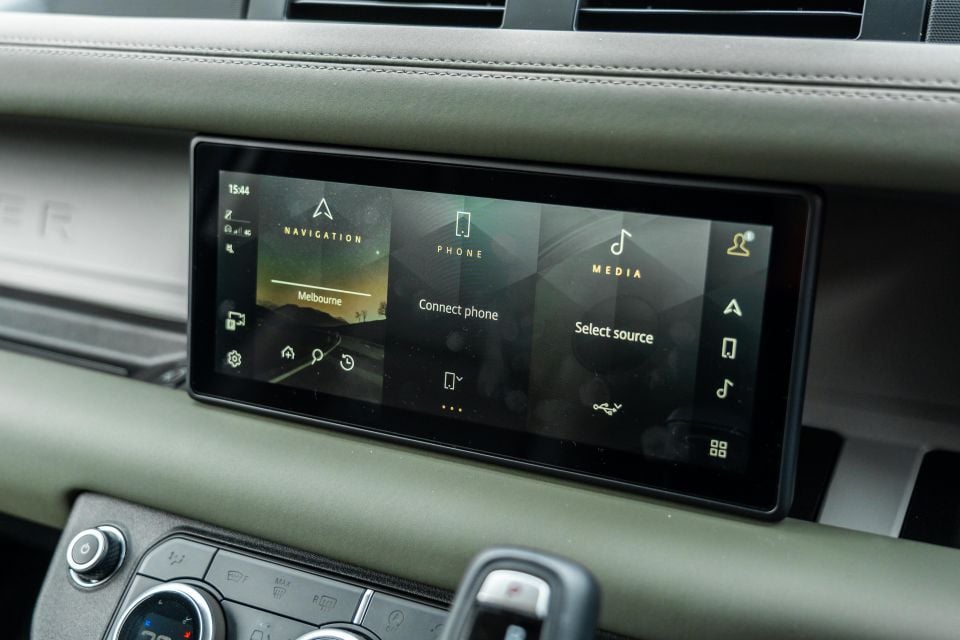
It’s well featured too, including wireless Apple CarPlay and Android Auto, DAB+ digital radio, as well as satellite navigation with traffic information. Compared to more complicated systems from some rival German brands, it’s refreshingly simple and easy to use.
It’s also easy to find a comfortable driving position thanks to the fully power adjustable front seats and steering column, and there are plenty of chunky physical buttons and controls for all your vehicle functions.
Land Rover’s commanding driving position is as present as ever in the Defender, putting you at the same level as some truck drivers on the highway. You have a great view of everything in the cabin too.
There’s a range of widgets and displays in the infotainment system and instrument cluster for general driving duties and off-roading. There are also various drive modes available, and adjustable air suspension which can jack up the ride height significantly.

I’m also a fan of the chunky rotary dials for the climate control, which double up as ventilated seat controls. Push to toggle the heated/cooled seat controls, push again to return to your normal temperature controls.
Build quality feels solid, but the Defender cabin isn’t Range Rover-plush, nor should it be. There’s a nice mix of soft-touch surfaces contrasted against more hard-wearing details and materials, and elements like exposed screws, rubberised areas and metal accents.
In fairness, the Defender is meant to carry on the all-conquering, go-anywhere spirit of the original. If you want more luxury, you’re better off looking at the seven-seat Discovery.
This three-door 90 may be much shorter in length than the larger 110 and 130, but the second row is positively adult-sized once you clamber past the front seats – it’s a very coupe-like experience.

It’s virtually the same rear bench in a smaller body that foregoes rear doors and sits atop a shorter wheelbase. You’ll easily be able to cart four-up without issues, and you can squeeze three across the rear at a pinch if you need to.
Rear occupants still get rear air vents and a fold-down centre armrest with cupholders, and you can option a third zone of climate controls if you regularly transport whiney rear passengers.
Padded rear armrests, floor-mounted bottle holders and large rear windows help to make this one of the more accommodating three-door vehicles on the market, and there’s also the roof-mounted rear ‘portholes’ too.
Should you need to carry kids, the rear seats also feature ISOFIX child seat anchors in the outboard positions, and top-tether points across all three rear seatbacks.
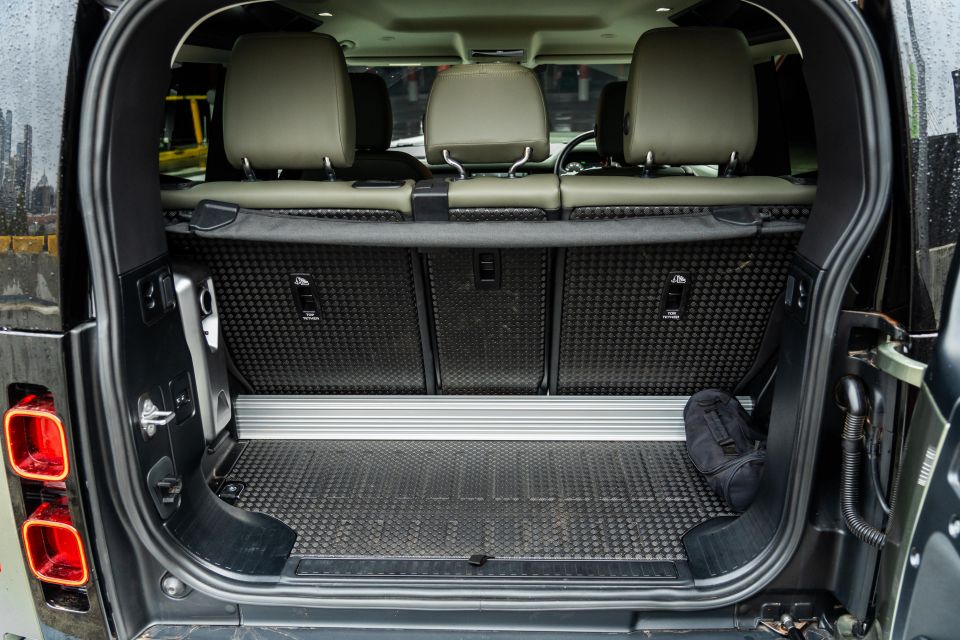
Boot space takes the biggest hit in the ‘shortie’ Defender, at a quoted 397 litres compared to the 110’s 972L. The space itself is very shallow with the rear seats up, too.
Should you need more room, you can fold each rear seatback down individually. The spare wheel is also mounted on the outside of the side-hinged tailgate too, which makes it heavy but very on-brand.
There’s a 12V power socket in the boot area, as well as bag hooks and a rear console that features remote switches to drop or raise the rear air suspension.
Finally, the optional integrated air compressor ($1416) with matching air hose kit could be a godsend if you ever need to re-inflate a tyre while out bush.
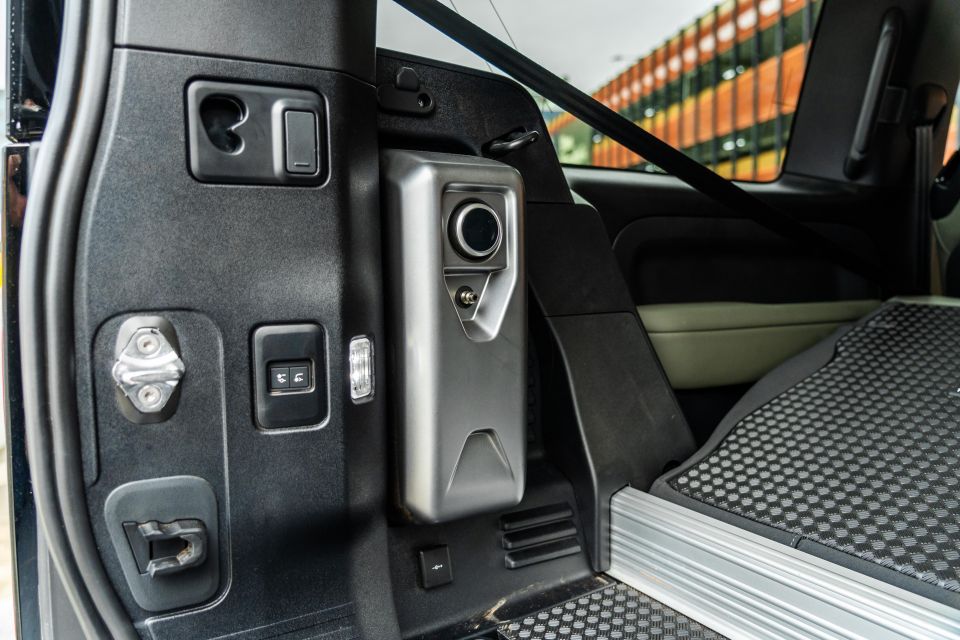
| Dimensions | Defender 90 S D250 |
|---|---|
| Length | 4600mm |
| Width | 1996mm |
| Height | 1969mm |
| Wheelbase | 2587mm |
| Cargo capacity | 397 litres |
To see how the Land Rover Defender lines up against its rivals, check out our comparison tool
D250 versions of the Defender are powered by a 3.0-litre inline six-cylinder turbo-diesel with 48V mild-hybrid assistance.
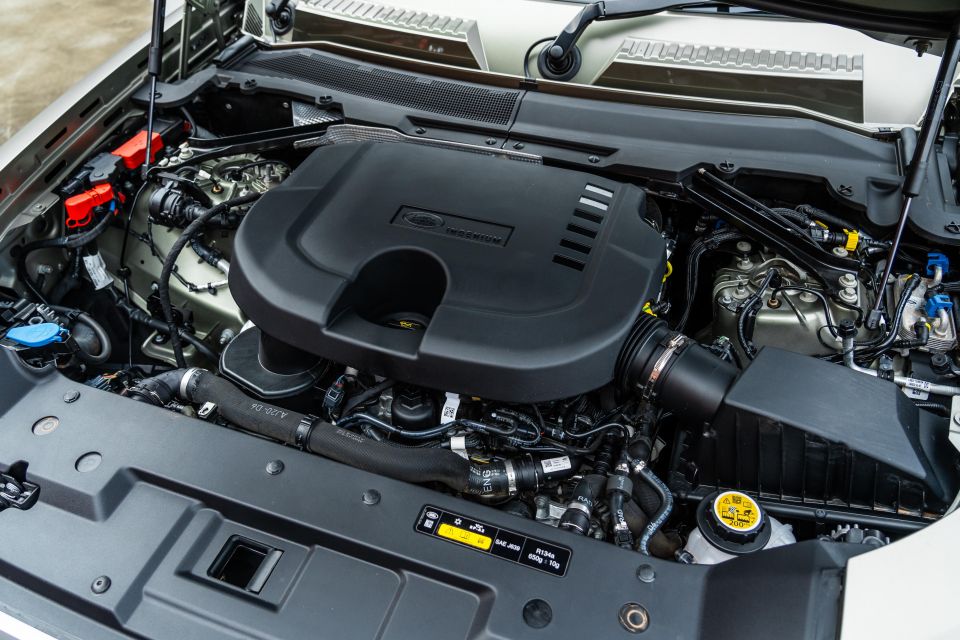
| Specifications | Defender 90 S D250 |
|---|---|
| Engine | 3.0L 6cyl turbo-diesel 48V MHEV |
| Power | 183kW at 4000rpm |
| Torque | 570Nm at 1250-2500rpm |
| Transmission | 8-speed auto |
| Drive type | AWD incl. low-range |
| 0-100km/h (claimed) | 8.0 seconds |
| Fuel economy (claimed) | 8.1L/100km |
| Fuel economy (as tested) | 9.5L/100km |
| CO2 emissions (claimed) | 214g/km |
| Fuel tank | 89 litres |
| Weight | 2241kg – kerb |
| Braked towing capacity | 3500kg |
| Gross vehicle mass (GVM) | 2970kg |
| Gross combination mass (GCM) | 6470kg |
To see how the Land Rover Defender lines up against its rivals, check out our comparison tool
Despite being the ‘baby’ Defender, the 90 is no shrinking violet.
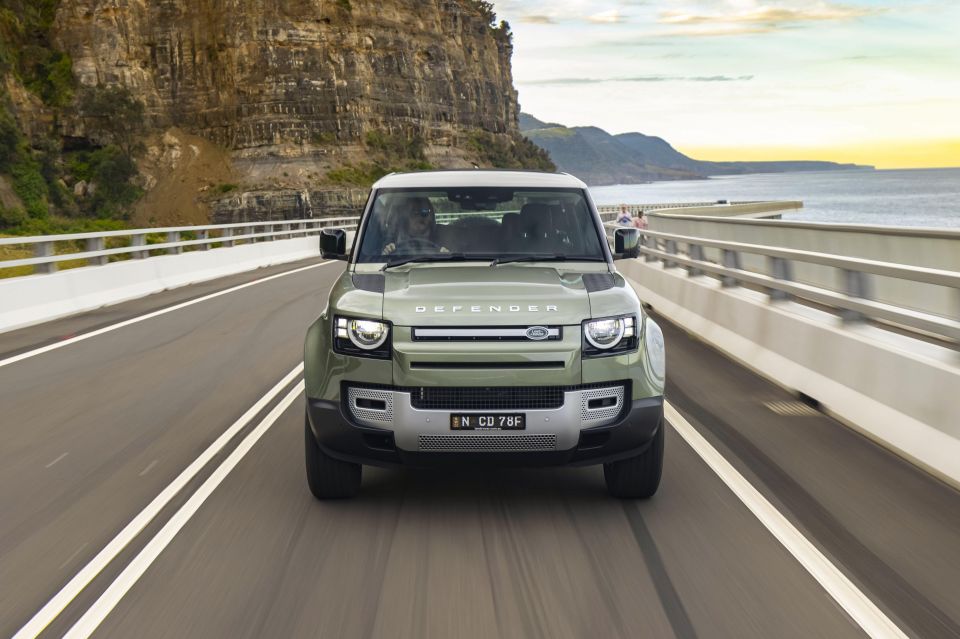
Pictured: 2021 Land Rover Defender 90
At 4.6 metres long and nearly 2.0m wide, the Defender 90 is still a reasonably big rig and about as long as a Toyota RAV4. But compared to the Defender 110 it’s easier to park in tight parallel bays in the city – should you frequent those kinds of café-dense areas often…
The 3.0-litre inline diesel six is a peach, and probably my pick of the engine range for the Defender’s intended purpose. Sure, the prospect of a burbling V8 is nice, but that’s likely to fade when you see the purchase price and fuel bills.
With 48V mild-hybrid assistance, the idle stop/start system is snappy in slow-moving traffic, while the oiler’s effortless torque wave makes this a relaxed performer off the line.
Keep in mind the Defender 90 still weighs 2.2 tonnes in this specification, and feels quite peppy when you punch it.

Like other big-block European diesels, Land Rover’s D250 unit is a smooth operator and relatively refined, only getting a little vocal under hard acceleration. There’s not even that much clatter, at least inside.
With eight cogs and intuitive shift logic, the eight-speed auto is an excellent partner for that sweet inline six. It shifts smartly and decisively, keeping the engine on the boil while also smartly upshifting to the highest ratio possible, placing the engine in its most relaxed rev band when at a cruise.
The ZF-sourced shifter is also quick to downshift if you need a rapid turn of speed and, as you’d imagine, rolling acceleration is very muscular despite the 8.0-second 0-100km/h claim. If you’re driving on the open road, you’ll be able to confidently overtake in the Defender 90 in a way that perhaps a four-cylinder Toyota Prado can’t.
Insulation from wind and road noise is mostly good without being standout. Thanks to the Defender’s upright proportions and massive side mirrors, you can get some wind buffeting at high speeds as well as some hints of road roar from the chunky all-terrain rubber.
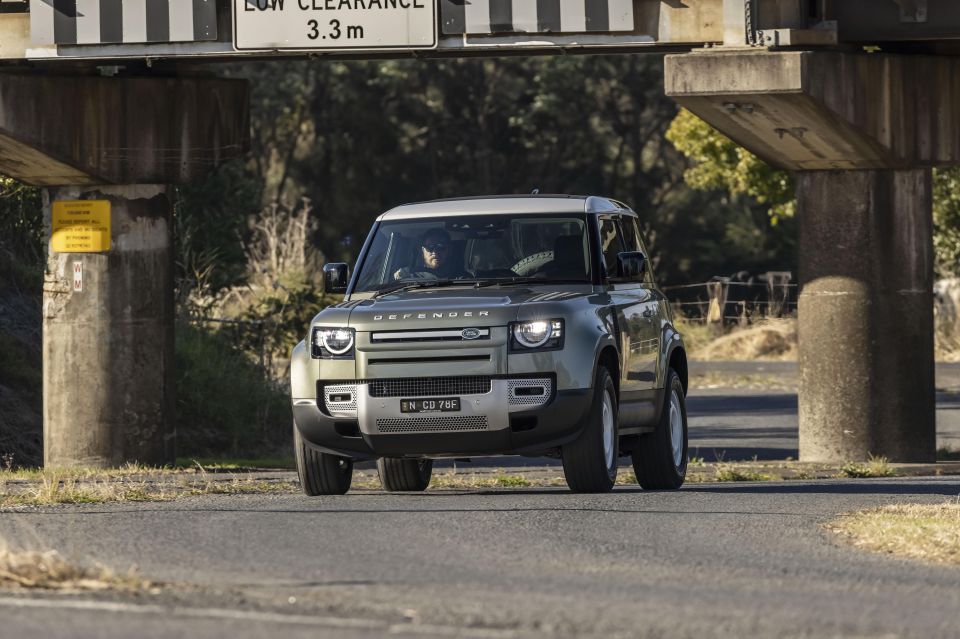
The electronic air suspension ensures a generally comfortable ride – though it isn’t quite Range Rover-like plush given the Defender’s more rugged skew – thanks in part to the extra sidewall on our test car’s small 18-inch steel wheels.
There’s a touch of firmness on impact that no doubt helps minimise body roll and ensures good recovery from primary bump absorption. Again, if you want more luxury, best look at a Discovery or Range Rover Sport.
Steering feel is light though fairly accurate, meaning it isn’t hard to handle or place the Defender 90 on the road. Plentiful visibility out of the upright glasshouse further boosts confidence behind the wheel, as does the standard surround-view camera system with 3D vehicle projection.
That said, the placement of the rear camera can mean it’s occasionally hard to judge where the tailgate-mounted spare wheel ends. I also didn’t find the optional ClearSight rear-view mirror particularly valuable in practice due to its high-mounted position and limited field of view.
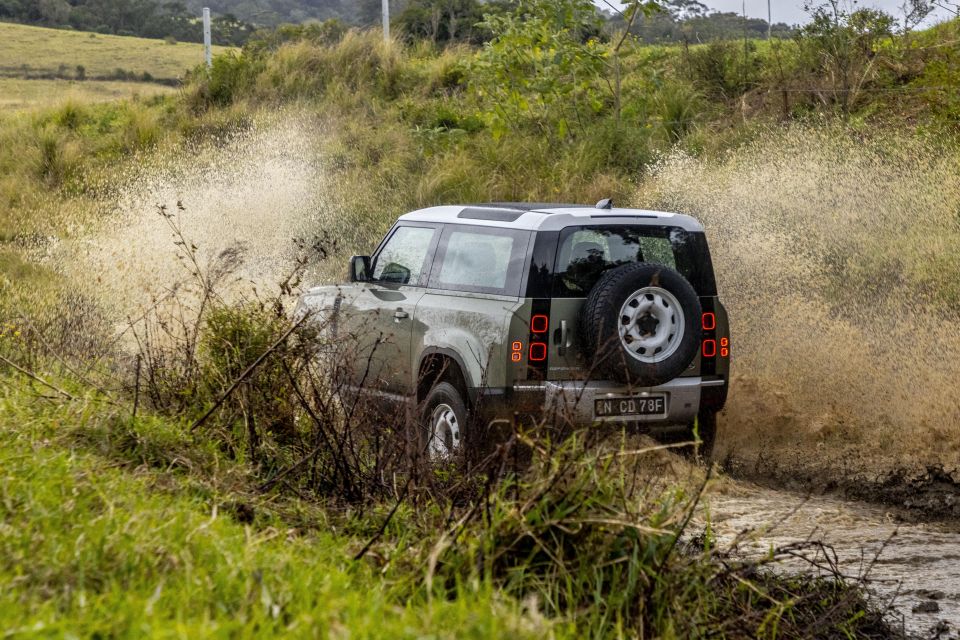
Where expert car reviews meet expert car buying – CarExpert gives you trusted advice, personalised service and real savings on your next new car.
While I didn’t take this particular Defender off-road, both 90 and 110 versions of the rugged Land Rover perform very well off the beaten track based on our previous testing, and are more than capable of tackling almost anything most owners would be willing throw at them.
In addition to the adjustable air suspension (which can raise the ride height to a dizzying 291mm), the Defender comes standard with the basic iteration of Land Rover’s Terrain Response system, which tailors the 4×4 drivetrain and electronic aids to suit different surfaces. There’s also hill descent control, hill launch assist, and low-range gearing.
The Defender 90 also has an impressive 900mm wading depth, and relatively generous approach, departure and breakover angles of 30.1/37.6/24.2 degrees respectively, meaning the shorter wheelbase significantly increases its clearance over moguls and the like.
Want to see it in action? See Paul’s video at the top of this review.

| Off-road dimensions | Defender 90 S D250 |
|---|---|
| Track front and rear | 1698mm / 1683mm |
| Ground clearance | 216mm |
| Approach angle | 30.1 degrees |
| Departure angle | 37.6 degrees |
| Ramp breakover angle | 24.2 degrees |
| Wading depth | 900mm |
To see how the Land Rover Defender lines up against its rivals, check out our comparison tool
Jaguar and Land Rover are quite convoluted in their specification lists, but here is a breakdown of what comes standard in the Defender S if you put an order down on one today.
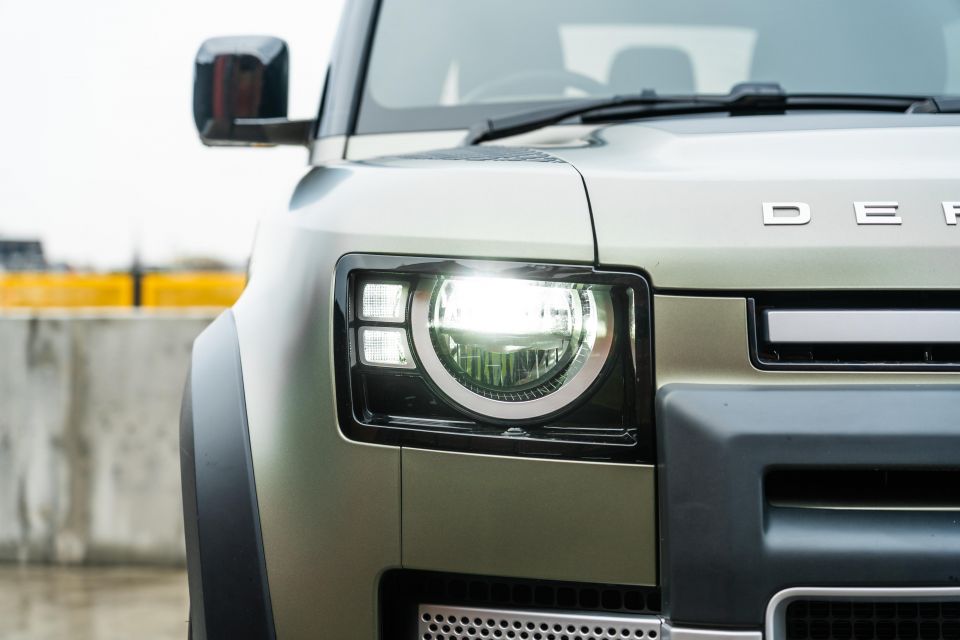

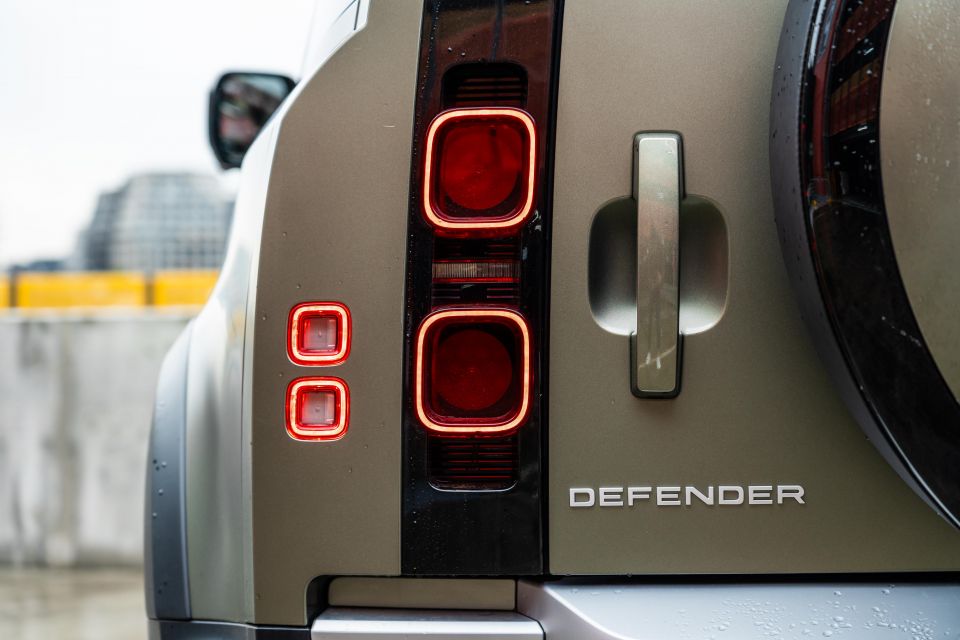

Note: MY24 Defender 90 S pictured
2025 Land Rover Defender S equipment highlights:
*Information based on Land Rover Australia’s configurator for the MY26 Defender 90 S
To see how the Land Rover Defender lines up against its rivals, check out our comparison tool
As noted earlier, our MY24 test vehicle was fitted with a number of options and packages.
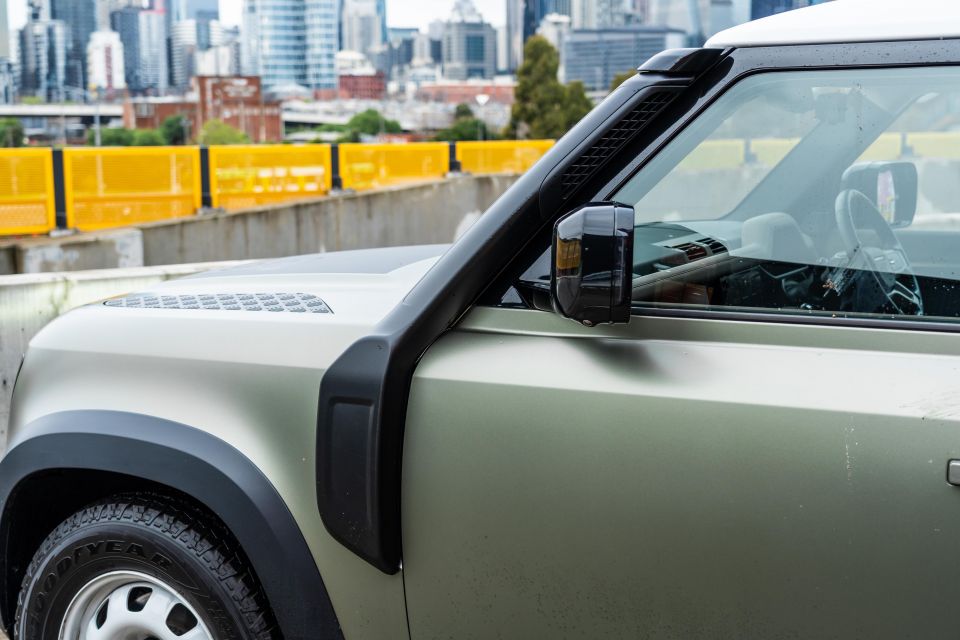
Off-Road Pack: $1660
Cold Climate Pack: $1480
Air Suspension Pack: $1310
Fitted standalone options include:
Fitted genuine accessories include:
Note that the incoming MY26 specification sees the Pangea Green paint pictured here discontinued, while features like the Air Suspension Pack now appear to be included as standard equipment. For the latest information, speak with your local Land Rover dealer.
To see how the Land Rover Defender lines up against its rivals, check out our comparison tool
The Defender 110 was awarded a five-star ANCAP safety rating against 2020 criteria – however, Defender 90 and 130 derivatives as well as V8-powered variants remain unrated by the independent safety body.
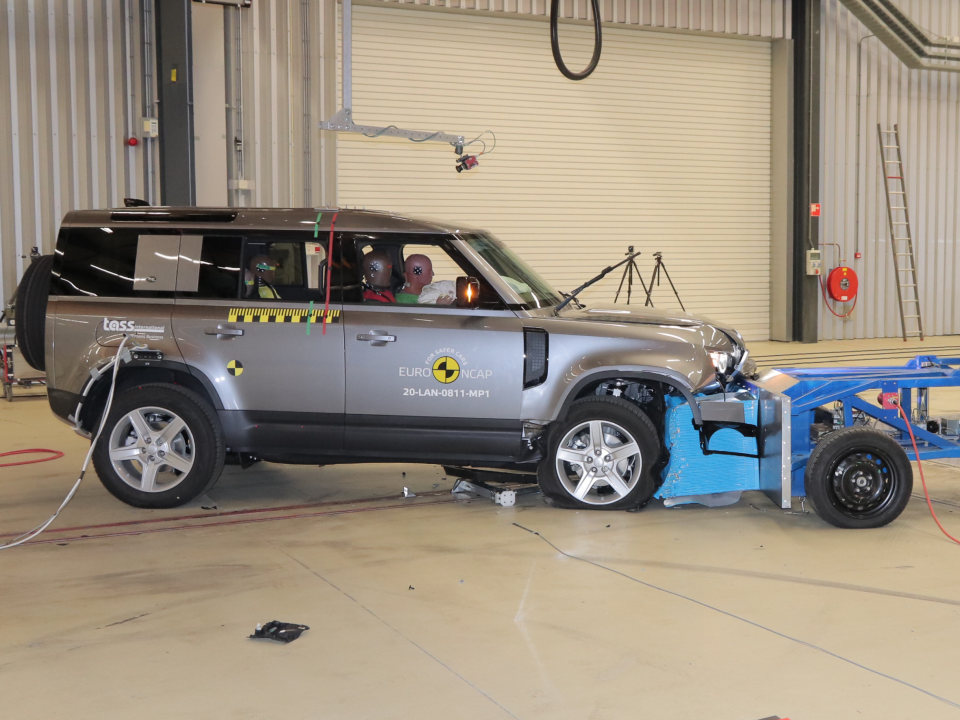
| Category | Defender 110 |
|---|---|
| Adult occupant protection | 32.51 out of 38 (85 per cent) |
| Child occupant protection | 43.22 out of 49 (88 per cent) |
| Vulnerable road user protection | 38.39 out of 54 (71 per cent) |
| Safety assist | 12.24 out of 16 (76 per cent) |
Standard safety equipment includes:
To see how the Land Rover Defender lines up against its rivals, check out our comparison tool
Land Rover Australia covers its range with a five-year, unlimited-kilometre warranty including roadside assistance for the same period, and the Defender has long 26,000km service intervals.
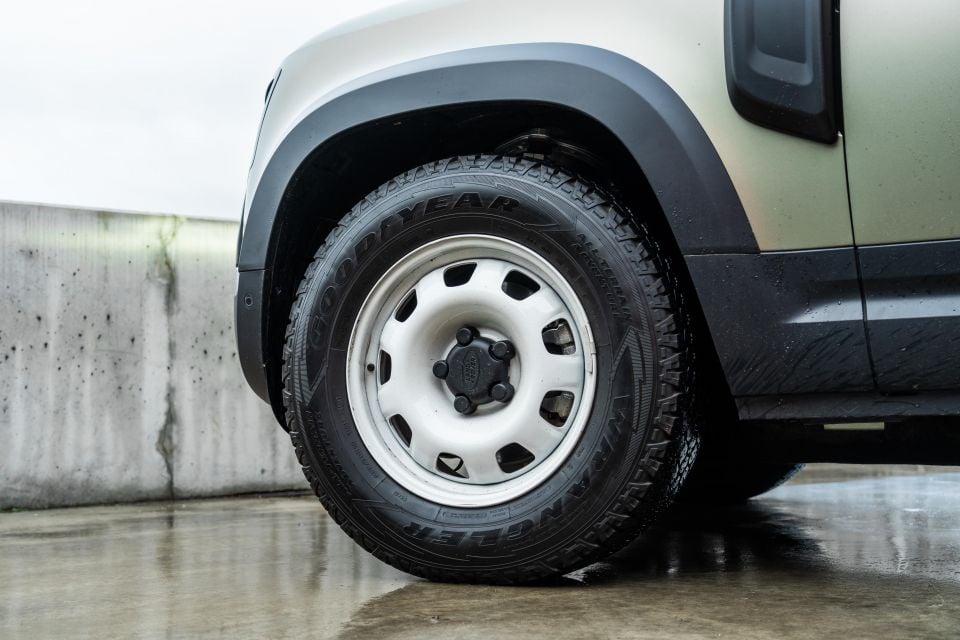
| Servicing and Warranty | Defender 90 S D250 |
|---|---|
| Warranty | 5 years, unlimited kilometres |
| Roadside assistance | 5 years |
| Service interval | 1 year or 26,000km |
| Capped-price servicing | 5 year service plan |
| Service pricing | $3500 – 5 years |
To see how the Land Rover Defender lines up against its rivals, check out our comparison tool
Like most premium or at least luxury-leaning 4WDs sold in Australia, the Defender 90 is unlikely to ever be used to its full potential and will instead spend most of its life putting around wealthy inner suburbs.
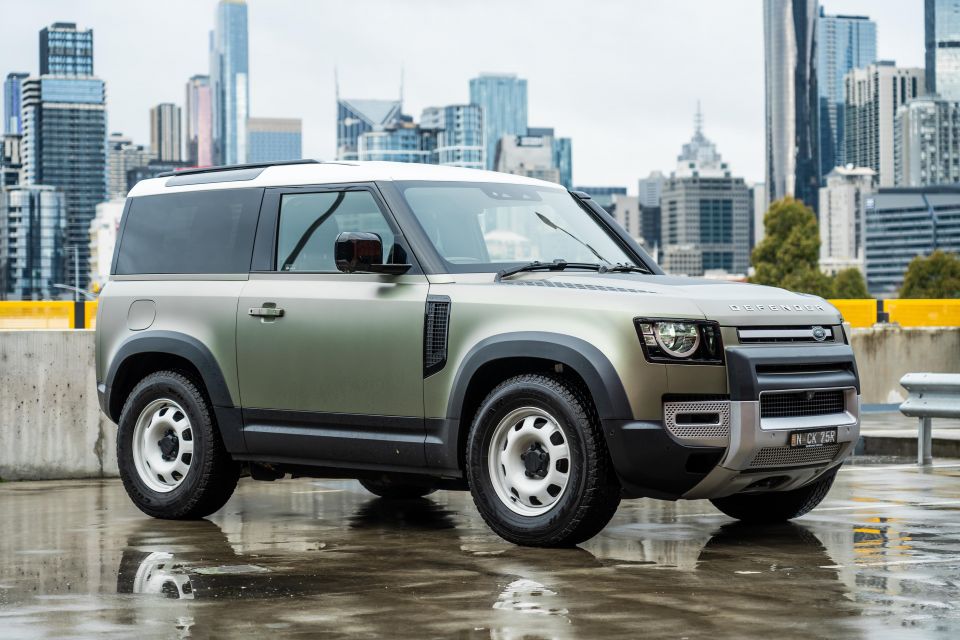
With that in mind, if you don’t have a sports team’s worth of kids to cart around, the Defender 90’s more city-friendly dimensions arguably make it the best suited to the lifestyle that Australian owners will likely subject it to.
As has been the case since its launch, the Defender remains a very comfortable and capable all-rounder, with effortless performance from its diesel six and all the creature comforts you could want – provided you’re willing to pay extra for some of them.
Running changes for MY26 seem to bolster the value offering somewhat via extra equipment, and you could save thousands on our press vehicle’s as-tested price by being more judicious with option boxes. For example, lose the satin paint film and ClearSight mirror and you’ve already pocketed $8500.
It’s a shame the lovely Pangea Green is no longer available for new orders, but the darker new Woolstone Green that replaces it for MY26 is just as delicious if not more so.
If you’re in the market for a go-anywhere off-road wagon and the Jimny and Jeep Wrangler are a little too pedestrian or utilitarian for you, it’s hard to go past the Defender – especially the three-door shorty, which is not only the cheapest body style but also the best looking and most capable off-road, if anyone cares to find out.

Interested in buying a Land Rover Defender? Let CarExpert find you the best deal here
Click the images for the full gallery
Where expert car reviews meet expert car buying – CarExpert gives you trusted advice, personalised service and real savings on your next new car.
James is an automotive journalist based in Melbourne, Australia. Before joining CarExpert.com.au in 2020, James has worked at leading auto media outlets including Carsales and CarAdvice, as well as at Pulse agency for Ford Australia's communications team. In 2019 James made Mumbrella's 'Top 20 most prolific web authors in Australia' list after publishing 1,360 articles between March 1, 2018 and February 28, 2019 for CarAdvice. James is also an Ambassador for Drive Against Depression – an Australian charity whose mission is to support mental wellness through the freedom of driving and a shared love of cars.


Andrew Maclean
1 Month Ago


Josh Nevett
27 Days Ago
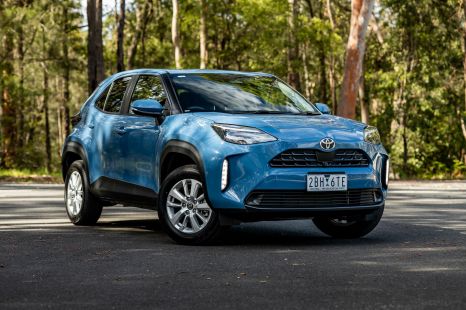

Matt Campbell
21 Days Ago
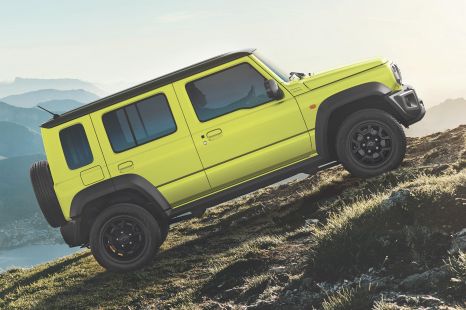

Damion Smy
14 Days Ago
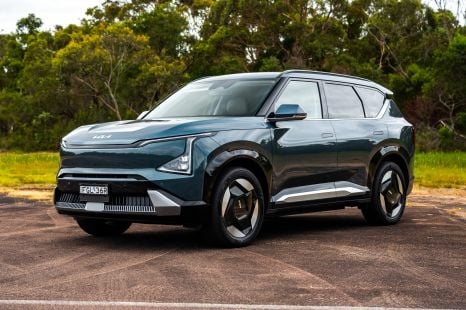

James Wong
14 Days Ago
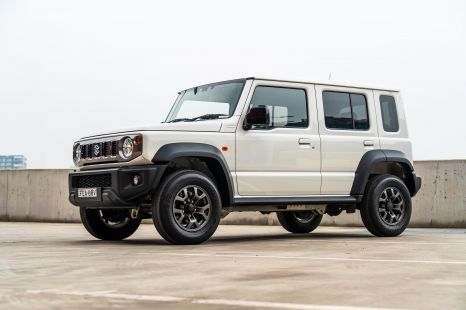

Damion Smy
13 Days Ago